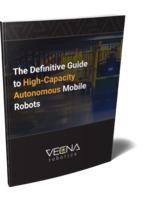Increase Efficiency in Intralogistics and Production
(Huntersville, September 17, 2008) Intralogistics and production processes are usually optimized down to the last second: No product should have to wait at any point in the process. The processing operations are highly standardized sequences with the goal of optimizing cycle times and lowering costs. But often, there is still a potential for optimization.
For example, when it comes to automating or optimizing material flow or feeding of components, testing work pieces during transport, or shortening response and waiting times. Very often, however, a traditional conveyor system cannot meet the demands of intralogistics and production.
Example: injection molding manufacturer
Manufacturers of headlights, wedge bases, and bottle caps had problems with response and waiting times. The unloading of the injection molding machines and the transport of the parts to the hard coating, metal coating, or pre-assembly/final assembly processes was done manually; there was no continuous workflow. As a result, problems in upstream processes were not recognized immediately. For the headlight manufacturer, an aggravating factor was that during the wait for the next production step, dust would gather on the sensitive parts. Ultimately, this translated into relatively high manufacturing costs for the manufacturer.
Solution
At this injection molding manufacturer's plant, a Montrac transport system now handles the intralogistics, optimizing the process. At a headlight manufacturer's, a Montrac system with an overall length of approx. 130 m was realized. At a speed of 30 m/min, 50 self-propelling shuttles transport the parts from the injection molding machines to the downstream hard-coating process. The result is "work in process," a continuous workflow, so that mistakes in an upstream process can be identified quickly and materials do not collect dust because they are kept moving. By using the Montrac system, this manufacturer was able to reduce scrap by 80 percent, and after only eleven months, the Montrac system had paid for itself.
Universal shuttle system
Montrac is a modular, universally usable transport system. The self-propelling shuttles draw a maximum current of 3A at 24 VDC. They run on monorails over tracs, curves with minimum radii of 280 mm, switches and crossings, to all processing stations. The shuttles communicate with the track via infrared light. They can also transport highly sensitive products without impact or vibrations, since an optical sensor integrated in the shuttle recognizes obstacles and gently brakes the shuttle.
Electrically driven components
The switches and crossings run on electricity. This eliminates the need for pneumatic components and their connections. The power is supplied directly via bus bars; thus, the system needs little or no wiring.
Easy installation
Installing the monorails and track connections is easy and fast - with only two tools, a Montrac line can be set up or changed over, as well as adapted to new conditions and demands.
For more detailed information please call 704.655.6400.




